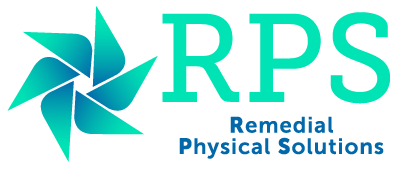Manual Lymph Drainage Dr. Vodder
This is a gentle, non-invasive manual technique that has a powerful effect on the body. Research in Australia, Europe and North America has proven its efficacy as a stand-alone treatment and in combination with other therapies. Developed in France in 1932 by Emil and Estrid Vodder MLD has grown to be the most well known manual technique to assist lymph flow and aid in drainage of tissues.
The Dr. Vodder technique
The Dr. Vodder technique always begins with treatment of the lymph nodes and lymph vessels found at the neck and the junction of the large lymph channels in the venous arch on both sides of the body (connection of the jugular and subclavian veins). Dr. Vodder calls this “clearing the chain lymph nodes down to the terminus”.
For MLD to be effective, use of the proper specialist technique and adaptation of the length of individual therapy sessions to meet the needs of the pathology concerned are essential. In comparison with other forms of massage, MLD sessions are unusually lengthy. A typical MLD session requires 30 to 45 minutes, but may be extended to 90 minutes, depending on the indication.
Effects of Dr. Vodder’s Manual Lymph Drainage (MLD)
Forty years of scientific studies MLD produces three major effects, all of which have been scientifically studied and confirmed:
Decongestive effect
Any swelling of the body – with the exceptions of cardiac (heart) and renal (kidney) edema – can be successfully treated with MLD. The lymphatic system is a kind of “one-way street”, which ultimately transports the lymphatic load (protein, fat, cellular and water load) in the right ventricle from the tissue back into the circulatory system. Just picture the lymph fluids as the waste removal system of the human body. Wherever “waste” (toxins, proteins, debris from wounds) is produced, the lymphatic system must act in order to drain such waste. The special MLD massage technique induces a pumping effect in the tissue. The lymphatic pathways’ own rhythm is accelerated to up to 20 times its normal rate. This enhanced drainage effect results in rapid decongestion and restoration of normal tissue condition.
Sympatholytic effect
Manual Lymph Drainage is very soothing and causes dilation of the lymph collectors which increases the contraction of the lymph vessels. MLD acts on the nervous system due to the slow rhythmic, light and repetitive precise movements which lowers the activity of the sympathetic nervous system. This may reduce any stress and anxiety allowing the body to heal.
Analgesic effect
MLD stimulates the lymphatic system to alleviate pain. (Gate control theory). MLD has a pain reducing effect because it stimulates the mechanoreceptors that have a cross connection to pain receptors in the spinal cord which reduces pain. Examples of pain, such as pain generated by migraine, headaches, sinusitis, whiplash, meniere’s syndrome, epicondylitis, hip & shoulder pathologies, inflammation of knee joint, fibromyalgia, etc., therefore is among the indications for lymph drainage.
Immunological effect
MLD helps accelerate the transportation of bacteria and allergens to the places where the body’s defence system is located (i.e. the lymph nodes) and where the increased rate of lymphatic drainage heightens the sensitization of lymphocytes and macrophages. The latter can travel more rapidly via the blood flow to reach the “scene of action” and intervene by phagocytosis, which in turn will improve immunization.
Manual Lymph Drainage (MLD) - contraindications
Any metastatic or systemic malignant condition must be excluded from MLD.
MLD is not suited for the treatment of acute inflammation (caused by bacteria, viruses or foreign bodies).
Any thrombosis at risk of causing embolism is an absolute contraindication.
Precautions are required if MLD is used in the following conditions:
a) Edema following carcinoma treatment
b) Thyroid dysfunction
c) Chronic inflammation
d) Bronchial asthma
e) Hypotension
f) Edema caused by cardiac decompensation should not be drained manually, as this may exacerbate such decompensation
g) Diabetes
CONDITIONS THAT CAN BE TREATED WITH MLD :
Sprains and Strains
Bruises
Arthritis
Pre and post-surgery
Stress
MS (Multiple Sclerosis)
Oedema (swelling)
Burns, wounds, ulcers
Acne
Tennis/golfers elbow
Headaches/Migraines
CRPS (complex regional pain syndrome)
Bursitis
Sinusitis
Constipation
Menieres
Chronic fatigue
Pre and Post Surgical Manual Lymphatic Drainage
Several benefits can result from Manual Lymphatic Drainage pre and post surgery.
Treatment can begin as soon as 24 hrs. After surgery, with approval of the doctor and as long as there are no contra-indications.
Applications of Pre and Post Surgical MLD
Pre-surgery: One to three treatment sessions are recommended. (with Doctor’s consent)
The increase in lymphatic flow will facilitate reabsorption of excess protein, cellular debris and waste which may have accumulated in the interstitial spaces.
Benefits may include:
preparation of tissue for surgery,
accelerates healing and minimises pain, bruising and scarring,
reduces oedema and swelling;
stimulation of the immune system,
induces a state of calm and relaxation,
Post-surgery: As soon as 24hrs after surgery. Two to three treatments are recommended (with Doctor’s consent).
Benefits may include:
reduction in post-surgical oedema or swelling,
encourages lymphatic “rerouting of lymph to functional vessels and nodes to reduce swelling,
pain reduction,
detoxification of body tissues helps reverse build-up of toxins secondary to effects of medication,
stimulates fluid circulation,
stimulates the immune system and helps prevent post-surgical infections,
improves skin regeneration and wound healing and assists with scar management.

